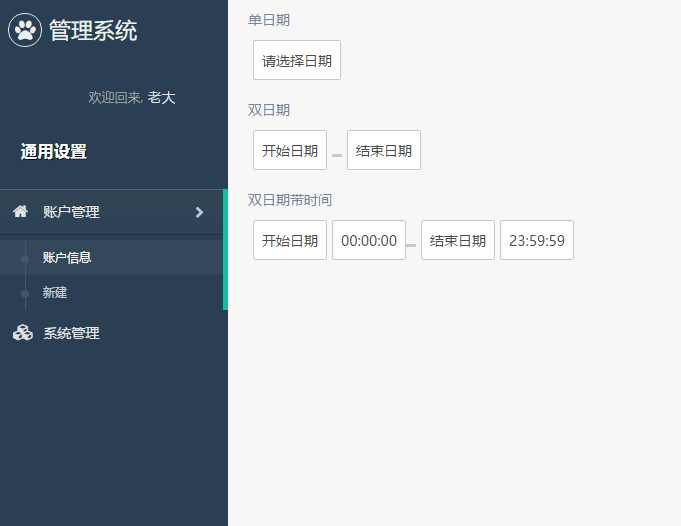1
2
3
4
5
6
7
8
9
10
11
12
13
14
15
16
17
18
19
20
21
22
23
24
25
26
27
28
29
30
31
32
33
34
35
36
37
38
39
40
41
42
43
44
45
46
47
48
49
50
51
52
53
54
55
56
57
58
59
60
61
62
63
64
65
66
67
68
69
70
71
72
73
74
75
76
77
78
79
80
81
82
83
84
85
86
87
88
89
90
91
92
93
94
95
96
97
98
99
100
101
102
103
104
105
106
107
108
109
110
111
112
113
114
115
116
117
118
119
120
121
122
123
124
125
126
127
128
129
130
131
132
133
134
135
136
137
138
139
140
141
142
143
144
145
146
147
148
149
150
151
152
153
154
155
|
export default (ngModule) => {
ngModule.directive('selectDate', function () {
return {
restrict: 'AE',
scope: {
data: '=?',
chosen: '=?',
text: '@?'
},
templateUrl: './shared/components/selectDate.template.html',
transclude: true,
replace: false,
link(scope, element, attrs) {
const dateNow = new Date();
const todate = `${dateNow.getFullYear()}-${dateNow.getMonth() + 1}-${dateNow.getDate()}`;
let beginDate;
let endDate;
scope.isShown = false;
scope.toggle = toggle;
scope.init = init;
scope.chooseDay = chooseDay;
scope.lastMonth = lastMonth;
scope.nextMonth = nextMonth;
scope.lastYear = lastYear;
scope.nextYear = nextYear;
scope.isDayChosen = isDayChosen;
scope.isDayActive = isDayActive;
function toggle() {
scope.isShown = !scope.isShown;
}
function init() {
if(!scope.data) {scope.data = {};}
scope.chosenDate = scope.data && scope.data.chosenDate || todate;
beginDate = scope.data && scope.data.beginDate || '1700-01-01';
endDate = scope.data && scope.data.endDate || '2900-12-30';
render();
}
function render(date?) {
scope.readingDate = FormatDate(date || scope.data.chosenDate || todate);
const year = Number(scope.readingDate.split('-')[0]);
const month = Number(scope.readingDate.split('-')[1]);
const firstday = getFirstDay(year, month);
const monthlength = getMonthLength(year, month);
scope.readingDays = [];
for (let i = 0; i < firstday; i++) {
scope.readingDays.push('');
}
for (let i = 1; i <= monthlength; i++) {
scope.readingDays.push(i);
}
}
function chooseDay(day){
const {year, month} = getDateDetail(scope.readingDate);
scope.chosenDate = scope.data.chosenDate = `${year}-${month}-${day}`;
scope.isShown = false;
if (typeof scope.chosen === 'function') {
scope.chosen(scope.chosenDate);
}
}
function lastMonth() {
let {year, month, day} = getDateDetail(scope.readingDate);
if (--month === 0) {
render(`${year - 1}-12-${day}`);
} else {
render(`${year}-${month}-${day}`);
}
}
function nextMonth() {
let {year, month, day} = getDateDetail(scope.readingDate);
if (++month > 12) {
render(`${year + 1}-1-${day}`);
} else {
render(`${year}-${month}-${day}`);
}
}
function lastYear() {
let {year, month, day} = getDateDetail(scope.readingDate);
render(`${year - 1}-${month}-${day}`);
}
function nextYear() {
let {year, month, day} = getDateDetail(scope.readingDate);
render(`${year + 1}-${month}-${day}`);
}
function isDayChosen(day) {
if (!day) { return false; }
const {year, month} = getDateDetail(scope.readingDate);
return FormatDate(`${year}-${month}-${day}`) === FormatDate(scope.chosenDate);
}
function isDayActive(day) {
if (!day) { return false; }
const {year, month} = getDateDetail(scope.readingDate);
const date = FormatDate(`${year}-${month}-${day}`);
return (date >= FormatDate(beginDate) && date <= FormatDate(endDate));
}
function getFirstDay(year, month) {
return new Date(year, month - 1, 1).getDay();
}
function getMonthLength(year, month) {
const nextMonth = new Date(year, month, 1);
nextMonth.setHours(nextMonth.getHours() - 2);
return nextMonth.getDate();
}
function getDateDetail(date) {
let year = Number(scope.readingDate.split('-')[0]);
let month = Number(scope.readingDate.split('-')[1]);
let day = Number(scope.readingDate.split('-')[2]);
return { year, month, day };
}
},
};
});
};
|


